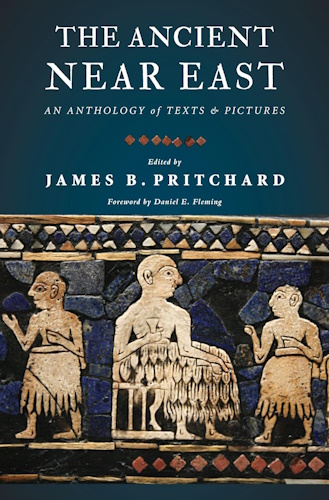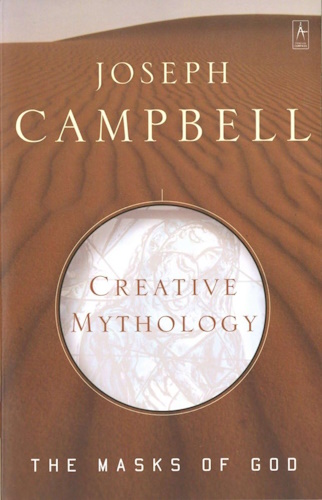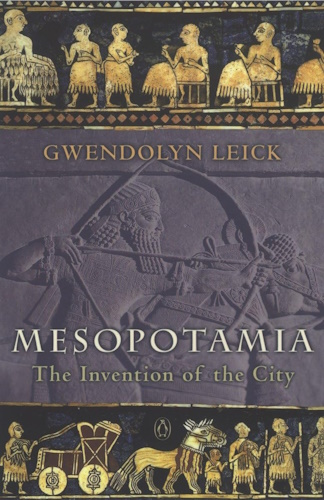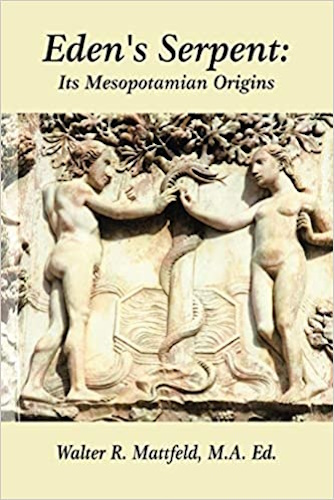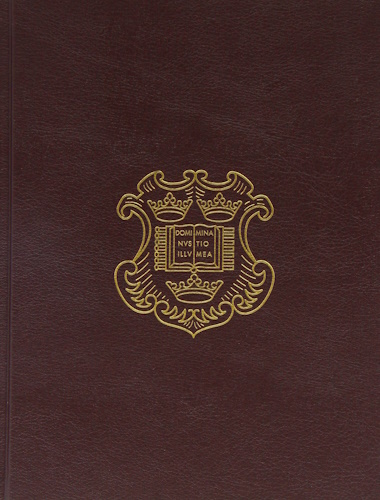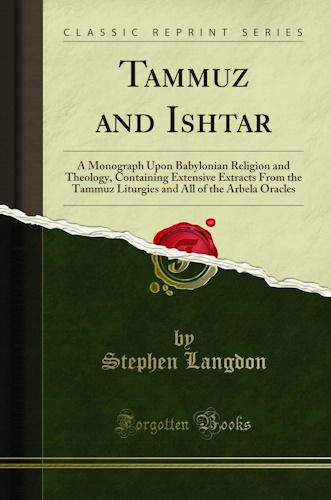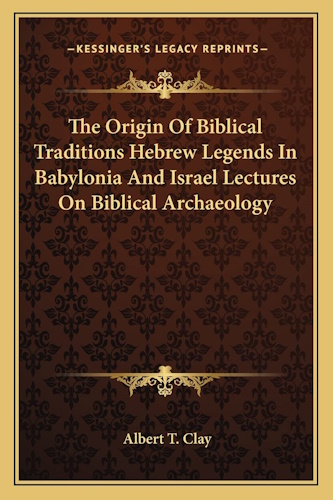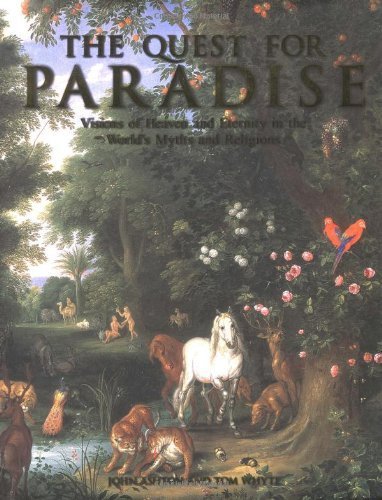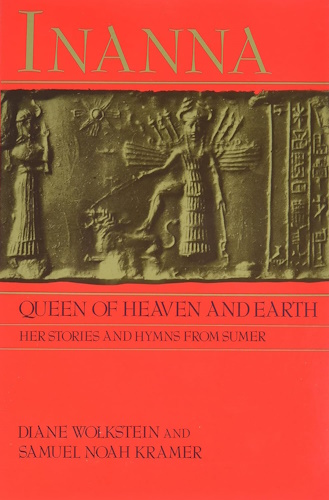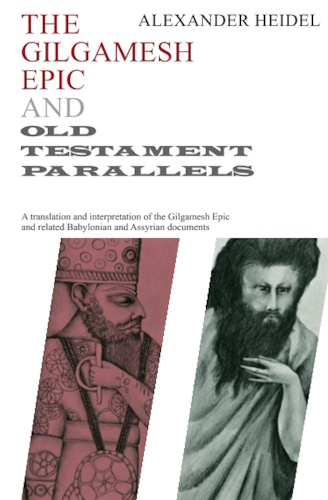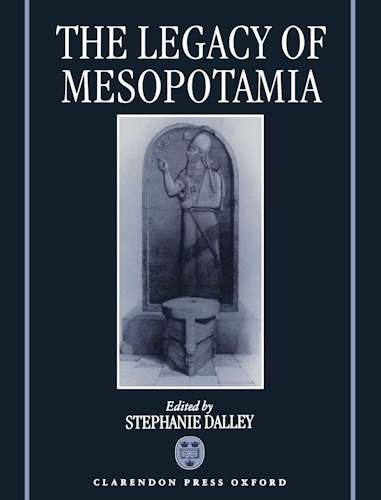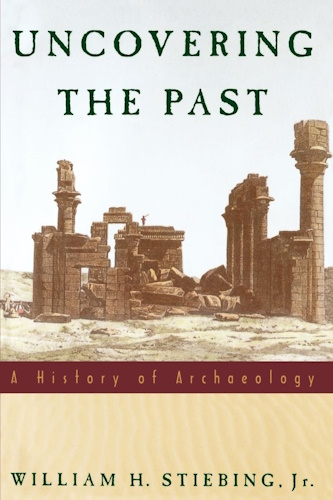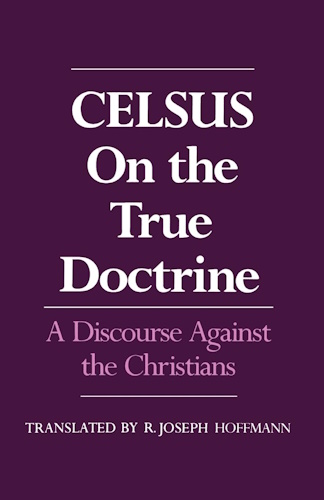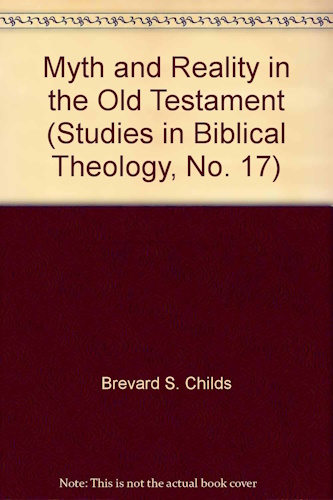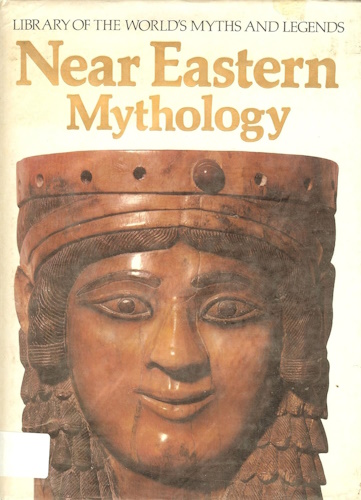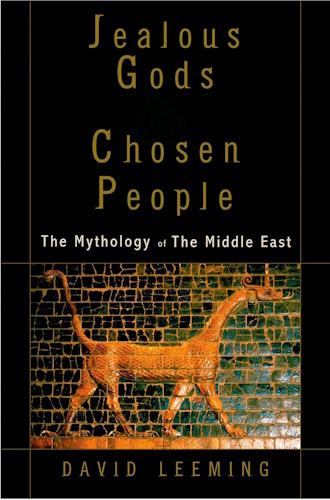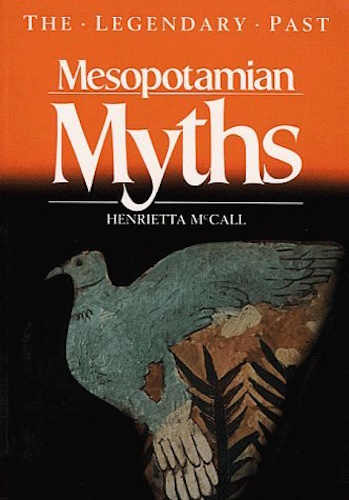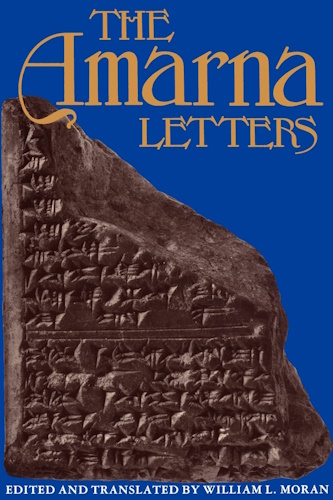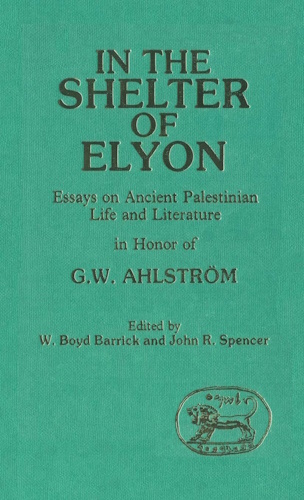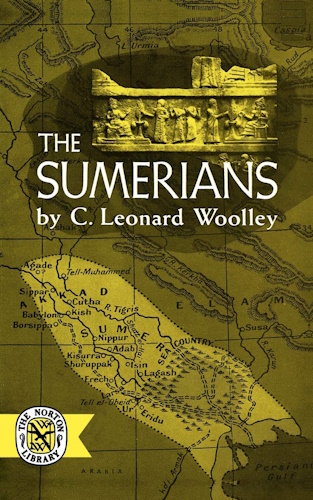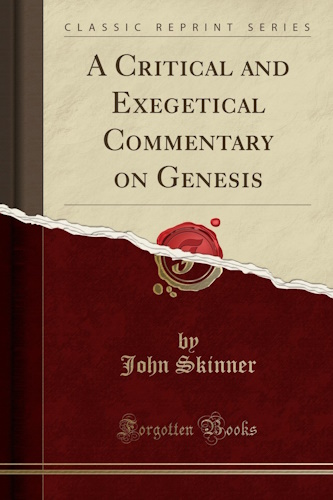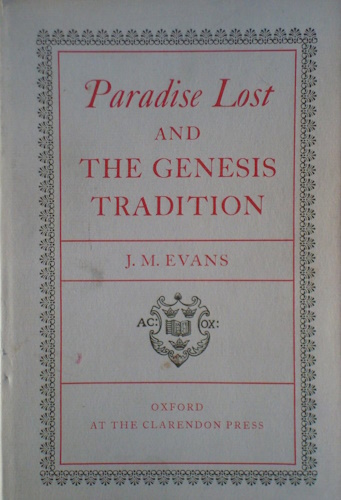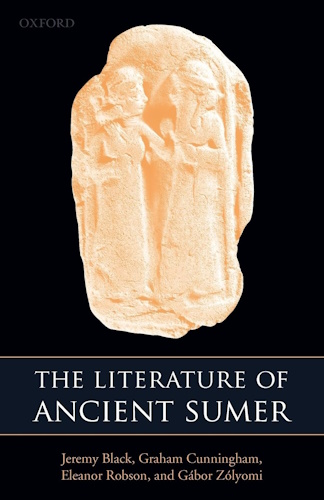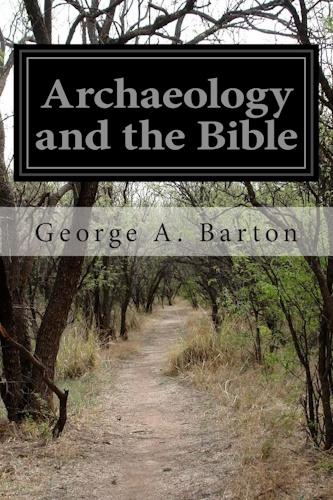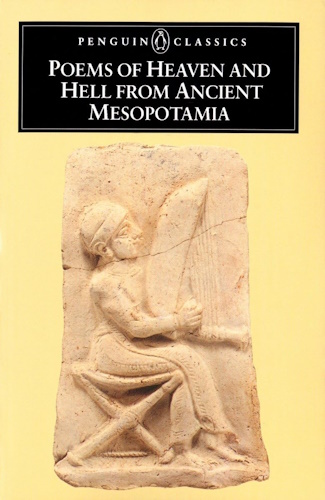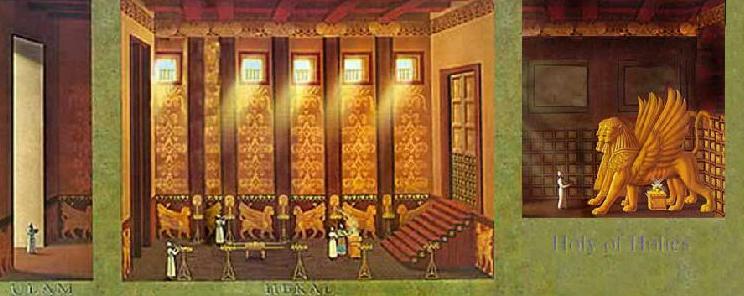![]()
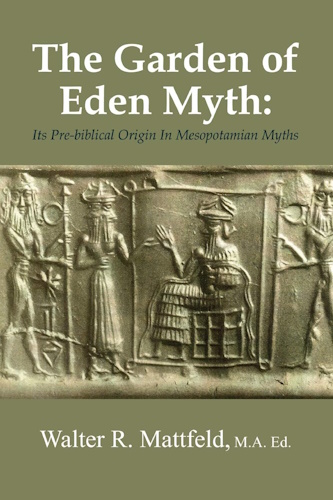
Bible Origins
Satan's Origins:
How the New Testament's Satan
came to be associated with
the Serpent
in the Garden of Eden
by
Walter Reinhold Warttig Mattfeld y d la Torre, M.A. Ed.
e-mail contact
02 August 2009
Revisions through: 03 September 2009
![]()
This article was ranked No. 1 over 595,000 other urls by Yahoo on 17 January 2010 when "Satan is Eden's Serpent" was keyed in.
Most Christians understand Satan assumed the form of Eden's serpent or snake to cause man's "fall from grace" and "alienation from God."
Jesus' birth, sufferings, and death is for the purpose of rescuing mankind from the power of Satan and his demons and establish the whole world as Jesus' kingdom instead of Satan's kingdom.
The mainstream Jewish view however, denies the Christian teachings: Satan is _not_ Eden's serpent! Perhaps they get this notion from the following verse:
Genesis 3:1 King James Version
"Now the serpent was more subtil than any beast of the field which the LORD God had made."
Note that the serpent is described as being a "beast of the field" made by God _not_ an angelic-being made by God possessing a humanlike form (bene-elohim "sons of God" Genesis 6:2, Job 1:6, Luke 10:18) who has fallen from God's favor and descended to the earth to inhabit or transform itself magically into the body of a snake to be man's enemy.
In the Old Testament (the Hebrew Bible) the term hasatan is an epithet describing a role assigned to a divine being, a so-called bene elohim "son of god," who carries out the function of an "adversary" (satan= "adversary") of man on God's behalf.
This being is _not_ portrayed as able to defy God's will, he always obeys his Master (God). A hasatan was sent to kill the prophet Balaam on God's behalf. When Balaam's ass or donkey sees the hasatan before him with a sword, he swerves away to protect his master from being executed for disobeying God.
The hasatan that afflicts a righteous Job does so only with God's permission, he is not allowed to take Job's life.
The Old Testament does _not_ call Eden's serpent a hasatan. That term is reserved for the angel, in presumably human form, who is sent to kill Balaam in the book of Numbers. Genesis' serpent is able to talk to humans and so too Balaam's ass, but neither animal is portrayed as being possessed by a supernatural individual, a hasatan, who can also assume a human form.
Pagels (Princeton University Professor of Religion):
"In the Hebrew Bible, as in mainstream Judaism to this day, Satan never appears as Western Christendom has come to know him, as the leader of an "evil empire," an army of hostile spirits who make war on God and humankind alike. As he first appears in the Hebrew Bible, Satan is not necessarily evil, much less opposed to God. On the contrary, he appears in the book of Numbers and in Job as one of God's obedient servants -a messenger, or angel...In Hebrew, the angels were often called "sons of God" (bene `elohim)...the Hebrew term the satan describes an adversarial role. It is not the name of a particular character. Although Hebrew storytellers as early as the sixth century BCE occasionally introduced a supernatural character whom they called the satan, what they meant was any one of the angels sent by God for the specific purpose of blocking or obstructing human activity. The root stn means "one who opposes, obstructs, or acts as adversary." (The Greek term diabolos, later translated "devil," literally means "one who throws something across one's path.")...The story of Balaam in the biblical book of Numbers, for example, tells of a man who decided to go where God had ordered him not to go. Balaam saddled his ass and set off, "but God's anger was kindled because he went; and the angel of the Lord took his stand in the road as his satan" [le-satan-lo] -that is, as his adversary, or his obstructor. This supernatural messenger remained invisible to Balaam, but the ass saw him an and stopped in her tracks:"
(p. 39. "The Social History of Satan." Elaine Pagels. The Origin of Satan. New York. Random House. 1995)
Pagels identifies Christian notions of Satan and his demons as forces of evil in control of the world as originating in Jewish Apocalyptic texts:
"This vision of cosmic struggle, forces of good contending against forces of evil, derived originally from Jewish apocalyptic sources and was developed, as we have seen, by sectarian groups like the Essenes as they struggled against the forces they saw ranged against them. This split cosmology, radically revising earlier monotheism, simultaneously involved a spilt society, devided between the "sons of light," allied with the angels, and "sons of darkness," in league with the power of evil. Followers of Jesus adopted the same pattern."
(p. 179. "Conclusion." Elaine Pagels. The Origin of Satan. New York. Random House. 1995)
Pagels mentions the Apocalyptic Book of Watchers, part of a series of books called the First Book of Enoch, explaining how watcher angels became evil. Apocalyptic literature seems to have arisen in Hellenistic Greek times, the 4th through 1st centuries BC as a literature covertly expressing native dissatisfaction with corrupt and despotic Hellenistic Greek rule (in Egypt and Judaea).
Pagels on The Book of Watchers (I suspect the daimones, appointed by the Greek gods to "watch over" or "rule over" mankind, have been recast by the Jewish author into fallen "watcher" angels):
" It tells how the watcher angels, whom God appointed to supervise ("watch over") the universe, fell from heaven. Starting from the story of Genesis 6, in which the "sons of God" lusted for human women, this author combines two different accounts of how the watchers lost their heavenly glory."
(p. 50. Pagels)
If the Jews are correct, that the serpent in the Garden of Eden was _not_ a hasatan, "where" are the Christians getting the notion that Satan _is_ the Edenic serpent (or, alternately, that Satan took temporary possession of the Edenic serpent's body)?
I suspect the answer is to be found in beliefs which arose among some Hellenized Jews in the so-called "Inter-testamental Period" of circa 333 BC to 100 AD.
Alexander the Great defeated Persia (ca. 332 BC) and created a Greek empire which included Judaea and the former Israel, as well as Syria and Egypt. Successor Greek kingdoms arose after Alexander's death in Syria (the Seleucids) and Egypt (the Ptolemies) who fought with each other over the area formerly making up the kingdoms of ancient Israel and Judah.
Ptolemy II (3rd century BC) conquered Jerusalem and carried off into slavery thousands of Jews, settling them throughout Egypt, many were settled in his capital at Alexandria which had been founded under Alexander the Great in his name.
The inter-testamental books called Maccabees One through Four (found in Catholic Bibles) reveal that the some Jews in Jerusalem, including priests and the upper classes, came to accept Greek religious beliefs and introduced these beliefs into the Temple and Jewish population at large.
Some Jews in Egypt prospered, became free, and made pilgrimages to Jerusalem's Temple.
The New Testament is understood to have been composed after Jesus' death which usually dated circa 30-33 AD. By this time the Jews and Galileans had been under Greek control and influence for about 400 years and some had come to accept the Greek explanation for why there was evil in the world, it was to be attributed to a class of divine beings called in Greek the daimones (daemons).
The New Testament is written in Greek because this was the 'international language" of the Roman Empire in the East (Judah having been for 300 years a part of the Hellenistic Greek Empire of 332-64 BC).
The Greek daimon or daemon is rendered in English translations of the New Testament as demon.
Unfortunately, English translations of the Old Testament use the word demon, leading the unsuspecting reader to assume demons were known to Israel and Judah before Alexander's Hellenistic empire was established circa 332 BC. Demon is a Greek word and the powers that were possessed by this divine being were uniquely Greek, not Hebraic, not Jewish.
The Greek notion of the powers and functions of the daimon evolved over some 800 years. Originally they were were spirits who carried out the gods' will. They "watched over" and "controlled" _all of mankind_ on behalf of the gods. Later, after Plato (5th century BC), a new notion arose regarding them. Plato taught that is wrong to ascribe evil to the gods, so evil was ascribed to "some" of the daimons. There thus arose after Plato a notion that there were good and bad daimons. The bad/evil daimones apparently became the Hellenistic Jews' demons while the good daimones became Christianity's angels of God. The New Testament's notion that the whole world is under demonic control is a Greek notion, it is _not_ Hebrew. All of mankind, in Greek thought before Plato, was understood to be under demonic watching or control, but this was to "foster justice." After Plato, the demons still control the whole world but now some are evil and incite men to do evil deeds: the Christians apparently took this belief one step further and declared all demons were evil and that Jesus' mission was to die and thereby via his resurrection and return to the earth in the Messianic Age, rid the world of demonic control.
The Jewish bible called the Septuaginta was written in Greek probably at Alexandria, Egypt in the 3rd century BC and it equates all the gods of the gentiles with daimones (Psalm 95.5)! This is a "swipe" at the gentiles' gods, claiming they are not gods, they are lesser powers, only the Hebrew God is a real God.
Morton Smith (1915-1991) Professor of Ancient History, Columbia University:
"...the Septuagint has a simple and brief answer to that, apantes hoi theoi ton ethnon daimonia, "all the gods of the gentiles are daimonia" (Septuagint Psalm 95:5)..The Septuagint, by saying that all the gods of the gentiles are daimonia, is degrading them to a class of beings subordinate to the one true God."
Smith, however, does note that the ancient texts do at times confusingly equate gods with daimones:
"...there is a very interesting class of exceptional passages which occur much more rarely but deserve, I think, much more attention. These are the ones that carry on the old tradition of identifying the gods as daimones, so that you get a list of names for example: lord god of gods, king daimon, followed by magical voces...Helios Horus is addressed as 'ruler of the world' or 'lord of the world,' 'daimon of sleepless fire'...I invoke you who created earth and bones and all flesh and every spirit (whose clearly the high god) conducting all things according to law, eternal eye, daimon of daimones, god of gods, lord of spirits, inerrant aeon, eaoueaouae. I call you because I can...the magician goes on to declare his magical powers. And then the god, daimon of daimons, god of gods, lord of the spirits and inerrant aeon is expected on the account of who the magician is, to show him proper respect and do as he is told...It's quite clear that the terms 'daimon' and 'god' are fluctuating back and forth here as practically equivalent terms."
So, by the 3rd century BC some Jewish intellectuals relegated all the gods of the gentiles to the rank of daimons, denying they were real gods possessing equal power with their God, Yahweh.
In Hellenistic Greek belief daimones were under the control of their gods and did their bidding, they were intermediaries between man and the gods. The Hellenistic World believed in demonaic possession. Demons could occupy the mind of a human and control it for good or for evil. Magicians arose who claimed they could control the daimones by uttering the name of the god's hidden name whom the daimon served and the daimon had to obey its god that it served.
In Greek thought daimones inhabitated the air space under the high heaven where dwelt the gods, they also inhabitated the earth, bodies of water, rivers, and the underworld.
Morton Smith:
"The papyri give you the fullest description of the daimones and their place in the world. They refer to them fairly often, as a class of beings who are intermediate, apparently, between gods and men. They are supernatural beings, in the sense that they haven't got human physical location and limitations, but they are subordinate to the gods. They are found in the air, on the earth, in the waters, and on the sea, and also in the underworld. An especially important class of them are the demons of the underworld, particularly the demons of the dead who become daimones after death- apparently all the dead do."
The New Testament's Satan by Hellenistic times apparently came to be portrayed as a demon or "prince of demons," and he could be controlled by the God whom he served. The New Testament book of John 1:1-10 claims Jesus Christ is the Logos ("the Word" in English) who created the world and Adam and Eve and who gave Moses the Ten Commandments. Thus Jesus as the God of the Old Testament is the God whom the daimones must obey as the the hasatans of the Old Testament obeyed Yahweh's orders and commands. So, Christians, invoking the name of Jesus Christ, had power over the demons, expelling them from men's minds and bodies as understood in Hellenistic Greek thought.
The New Testament attributes powers to Satan as a demonic being not ascribed to him in the Old Testament.
He has the power to defy or rebel against God.
Now he is God's enemy and is to be imprisoned by God in chains and tossed into a bottomless pit for a thousand years then released to afflict once more the nations.
He will be tortured for ever in the Lake of Fire.
He is ruler of all the earth and over all peoples, he has the power to give Christ all the kingdoms of the world and their subjects if Jesus will worship him as his god.
Christ saw Satan fall from heaven like lightning in his rebellion against God.
Satan carries off a third of God's angels as demons in his rebellion against god, and they take up residence on the earth instead of heaven, where he will seek to afflict the righteous followers of Jesus bringing about their deaths.
After Jesus' resurrection the fallen angels (demons) are consigned in chains to the underworld to await the judgement day (Jude 1:6).
What has intrigued me as a Secular Humanist, is how to account for the New Testament's denial of the Jewish understanding about the powers of the hasatans and the powers now ascribed to a being called Satan who rules the whole earth via his demons.
It appears to me that the Jews and later the early Christians, many of whom had been Jews, had accepted the Greek daimones as responsible for sowing discord and evil in the world via possession of human minds.
How did one individual, Satan, become the "Prince of Demons" the all-powerful ruler of this horde and "Ruler of ALL the World"?
I suspect these powers were earlier associated in Hellenistic Greek demonology (Hellenistic Greek Hermetic beliefs) with two other beings called the Agathos Daimon and the Helios Daimon as both are portayed as all-powerful and each is called the "ruler of the the world" and that their epithets were ascribed to Satan by either Hellenized Jews or Christians.
What follows are excerpts culled from the internet alluding the powers associated with certain daimones that I suspect were later ascribed to Satan:
Invocation of the Agathos Daimon (Agathos="good" Daimon="spirit"; PGM= Papyri Graecorum Magni, alternately called Greek Magical Papyri or Coptic Egyptian Magical Texts)
"Rejoice with me, You who are set over...the world, for whom all the gods serve as body-guards...You who are the Agathos Daimon of the world, the crown of the inhabitated world, you who arise from the abyss, you who each day rise a young man and set an old man...I beg you lord, do not allow me to be overthrown, to be plotted against...Rather, I ask to obtain...victory over all men and all women... (PGM 36:211-30)
Magical spell invoking the Agathos Daimon:
"...lady Isis, whom Agathos Daimon permitted to rule in the entire Black Land [i.e., Egypt]...Protect me...for I am the one established in Pelusium..." (PGM 7.490-505)
Invocation of Agathos Daimon, lord of the winds:
"I invoke you, the greatest god, eternal lord, world ruler, who are over the world and under the world, mighty ruler of the sea, rising at dawn, shining from the east for the whole world, setting in the west...Agathos Daimon..."
(PGM 4.1596-1715)
The Greek word for a large snake or serpent was drakon, English: "dragon," Satan is called a serpent and dragon in the Book of Revelation (Rev 20:1-2):
"Then I saw and angel coming down from heaven, holding in his hand the key of the bottomless pit and a great chain. And he seized the dragon, that ancient serpent, who is the Devil and Satan, and bound him for a thousand years, and threw him into the pit..."
Giant snakes brought to Alexandria:
"Egyptian histories relate that in the time of Ptolemy Philadelphos were brought from Aithiopia to Alexandria two large drakones and that one of them was fourteen cubits long, the other thirteen; and in the time of Ptolemy Euergetes three were brought, one was nine cubits long, the second seven, and the third snake one cubit less. And the Aigyptians assert they were tended with great care in the temple of Asklepios." (Aelian, On Animals. 16.39)
(http://neosalexandria.org/agathosdaimon.htm)
The Agathos Daimon is associated with drawing up from a deep pit the goddess of peace, to end war. In Revelation Satan, who wages war on Jesus' followers, is consigned to a deep pit to give the earth a temporary peace:
"In Aristophanes' Peace, when War has trapped Peace (Eirene) in a deep pit, Hermes comes to her aid: "Now oh Greeks! is the moment when freed of quarrels and fighting, we should rescue sweet Eirene and draw her out of this pit...This is the moment to drain a cup in honour of the Agathos Daimon."
("Agathodaemon." http://e.wiki/Agathodaemon)
Professor Smith on daimons and magicians who claimed they had the ability to summon and have them do their bidding, for a price, on behalf of their customers or clients (2nd-6th centuries AD). He noted that gods are at times confusingly called daimones, and thus even the gods are under the magician's power. The daimon must obey the magician when invoked by the secret name of the god the daimon serves. Jesus at Armageddon when fighting Satan has a secret name no one knows.
What is interesting for me is that the texts suggest that the Agathos Daimon, represented in Egypt as either a serpent or snake, can also be represented as a handsome young man in the prime of life (his 20's) or a mature bearded man and Satan is understood to be able to assume the form of both a serpent and a human male like the Agathos Daimon.
Other verses speak of the Agathos daimon as rising as a young man and setting as an old man, this is Egyptian mystical doubletalk for the sun rising at dawn as a youth and setting as an aged man. So, the Agathos Daimon was assimilated to the sun-god in both a youthful and aged man. The sun-god in Greek was Helios, Latin Sol. Magical texts speak of the Agathos Daimon as the Helios Daimon and "ruler of the world," a similar epithet was ascribed to Satan, he too is a "ruler of the world" and all peoples are his subjects (with the exception of the Christians).
Smith:
"...the old tradition of identifying the gods as daimones...Helios-Horus is addressed as "ruler of the world" or "lord of the world," "daimon of sleepless fire"...
The Egyptian god Bes as a daemon is likened to being lightning and Jesus says he saw Satan fall like lightning from heaven:
"Spell for demanding a dream of Bes. "I call upon you the headless god who has sight in his feet. You who lightning and thunder..." etcetera....I conjure daimon by your two names: Anouth-anouth."
"...Agathos daimon is a well recognized god, who has well recognized cults in Egypt also elsewhere in southern Italy and the like. But you find other gods also being called daimon..."
"...obey me Agathos Daimon whose power is greatest of the gods. Obey me, go!...Whose hidden name the daimones are terrified..."
The above description of other demons being subject to the Agathosdaim out of terror or fear is remarkably exemplified in Satan's power over his demonic hordes as noted below:
"Ephesians 6:12 suggests an order or rank of demons: "aginst the rulers, against the powers, against the world forces of this darkness, against the spiritual forces of wickedness in the heavenly places" (Eph 6:12 NASB.
Their allegiance is to the devil, whom they serve out of fear and delusion. Their purpose is to carry out the schemes of Satan and to oppose God. They tempt, deceive, and delude people so as to bring them to eternal damnation."
(p. 264. "Demon." Eugene E. Carpenter & Phillip Wesley Comfort. Holman Treasury of Key Bible Words: 200 Greek and 200 Hebrew Words Defined. B &H Publishing Group. 2000)
Certain daimons were associated with magical plants, the daimon's name had to be invoked at the time of the herb's removal from the earth. Was this recast as Eden's fruit associated with the Edenic serpent?
"...directions for collecting herbs. An Egyptian when collecting herbs takes hold of the plant and calls on the daimon to whom the plant is sacred...He tells the plant that it is the heart of Hermes...it is the soul of Osiris..."
(Morton Smith. The Demons of Magic. http://www.hermetic.com/pgm/demons-magic.html)
Mierzwicki (corn= "wheat" a horn of plenty= cornucopia):
"To the Greeks, Agathodaimon was the guardian of the vines and cornfields, and it was honoured after meals by drinking a cup of pure undiluted wine. Agathodaimon was represented like a snake and sometimes like a young man holding a horn of plenty and a bowl, or a poppy and ears of corn."
(Tony Mierzwicki. The Magick of Alexandria. http://hermeticmagick.com/content/deities/agathodaimon.html)
Besides demons being able to assume animal forms, some Greek gods could also assume animal forms as for example the supreme god Zeus assuming the form of a snake, a bull, and a swan. To the degree that the gods were at times called daimons, this imagery could be applied to Christian notions: that demon-Satan could assume an animal form like Eden's serpent.
Conclusions:
The powers originally associated with Hellenistic Greek daimones appear to have been reworked somewhat and ascribed to Satan and his fallen angels by Hellenized Jews and Christians.
I suspect that the Jews are right, Eden's serpent was not a hasatan possessing the Edenic snake's body (Christians' Satan) in spite of the claims made in the New Testament's Book of Revelation.
The Old Testament's hasatans were apparently recast and fused together into one being, Satan, by the Christians, who now is able to defy god, rebel against him, and refuse to do his biddding. His punishment for not obeying God is to be tortured for ever in the lake of fire.
The above exerpts from papyrus texts of the 4th-5th centuries AD reveal that certain powers ascribed to Satan also were ascribed to the Agathos Daimon of Alexandria, Egypt in its role as Helios-Horus (Greek and Egyptian deities who were fused together as manifestations of the sun-god). That is to say the Agathos Daimon who was called "lord of the world" bore a similar epithet as was given to Satan; the Agathos Daimon held power over gods and daimons who were in terror of its hidden names and in the New Testament Satan's demons are under his power as well.
All this suggests for me that certain powers associated with the Agathos Daimon of Alexandria, Egypt were ascribed to Christianity's Satan who, in turn, is a recasting of the Old Testatments' hasatans. We are apparently witnessing here an evolution of ideas, a changing, recasting, fusing and reworking of earlier motifs into a new set of beliefs.
The Agathos Daimon is associated with the rescuing of Peace (Eirene) from a deep pit and this motif appears to be recast via an inversion, Satan the Serpent being cast into a deep pit to bring about a temporary "peace" on the earth. That is to say a Greek motif has been "reworked" or "inverted."
Satan in the New Testament is associated with being able to take on various forms, a serpent, a dragon, and a human male, all of these forms also apply to the Agathos Daimon of Alexandria, Egypt. Jews had been living in Alexandria in great numbers since their enslavement in the 3rd century BC by Ptolemy II. They visited on occasion, Jerusalem, the Books of the Maccabees I-IV attest to Jewish High Priests trying to introduce Greek religious notions into the Temple service and the Jewish upper classes had to some degree become Hellenized. It is this background of a fusion of Greek religious beliefs about daimones and their powers that informs the notions about demons in the New Testament, powers unknown to the authors of the Old Testament (Genesis-2 Kings dated 560 BC in the Babylonian Exile before the rise of Hellenism in 332 BC).
If all the above is "on target," then the Christian notion that God sent his only begotten son, Jesus the Christ, to deliver the earth and mankind from the power of Satan and his demons is nonsense. The powers ascribed to Satan and his demons are a byproduct of Greek metaphysical thought of the Hellenistic period (4th centrury BC to 1st century AD) particularly evident in the Hermetic-Greek philosophies: invoking a god's hidden name to control the daimones, it has nothing to do with the Old Testament view of God and the hasatans who never dared rebel against their lord and master.
Finally, how did Satan in the Book of Revelation come to associated with Eden's serpent?
I have noted that the Alexandrian Agathos Daimon in its role as Helios-Horus was presented as a sun-god that was called "Lord of the World," and that Satan claimed to Jesus, all the world was his to give if he would worship him.
The Agathos Daimon was represented in art as either a great serpent (Greek: drakon, English:"dragon") or as a man. Satan has apparently not only assumed the Agathos Daimon's' title "Lord of the World," he may have been associated with Eden's serpent because the Agathos Daimon was represented in art as a serpent or snake. In human form the Agathos Daimon is shown sometimes holding the produce of the field and garden in a cornucopia or horn of plenty; perhaps the Edenic serpent's association with a garden possessing and abundance of produce strengthened the association? No Old Testament texts mention demons manifesting themselves in animal forms, as for instance Genesis' Garden of Eden snake is not called a hasatan or Satan. The New Testament book of Revelation written apparently in the 1st century AD reflects the contemporary views of the Hellenistic world: that daemons can take on human as well as animal forms; the Agathos Daimon being represented as a serpent or as a man rather like Satan.
The Greeks also had a myth about a great serpent called Ladon that guarded a fruit tree posessing golden apples given to the goddess Hera in the Garden of the Hesperides somewhere in the west (Spain or Morocco), this imagery could have also been recast by Hellenized Jews and early Christians and assimilated to the Edenic serpent who was associated with forbidden fruit.
It must be stressed that the Agathos Daimon was _not_ envisioned as being a harmful evil daimon, it was "beneficial" to man and personified abundant harvests, prosperity and good luck. But the Christian attitude was that _all_ daimons were evil, contra the Greek notion that there were good and bad daimons. So, by "default" the Agathos Daimon was associated with evil and his epithet "ruler of the world" probably came to be ascribed to Satan who offered Jesus all the kingdoms of the world if Christ would worship him.
The Agatos Daimon laid claim to the epithet "Ruler of the World" or "Lord of the World" via its assimilation to the sun-god, who worshipped as Sol by the Romans or as Sol Invictus the "Conquering Sun" which was seen as the "Ruler of the World" as late as the days of Constantine the Great (ruled circa 330 AD), the Roman Emperor who portrayed himself on his coins as Sol Invictus. Later, Christian imagery would transfer the Sun's imagery to Christ who would be portrayed as the Conquering Sun with the sun-halo about his head.
If my "hunch" is correct, then most probably via Hellenized Jews residing at Alexandria who made pilgrimages to Jerusalem, Greco-Roman notions that the Agathos Daimon who could assume the form of a man or a great serpent (a drakon or dragon) were recast in the service of a new religion, Christianity, and assimilated or ascribed to a demonic Satan, "ruler of the world" and leader of the demons, who, as Eden's serpent, must be defeated by Christ.
Please click here for images of the Agathos Daimon as a man and as a serpent whose epithets and imagery may have been transferred to the New Testament's Satan, "The Ruler of the World" and "Prince of Demons."
Please click here for Roman wall frescos (paintings) of the Agathodaemon of the 1st century A.D.
PLEASE, PLEASE, PLEASE click here for my _VERY_IMPORTANT_ article on the Pre-biblical origins of the New Testament's Demons which covers in greater depth their historical development.
My musings:
Christianity's teaching that Satan took on the form of Eden's serpent is a "foundational belief" as it underlies Christ's mission: to defeat Eden's serpent (Satan, the Liar, Devil, Deceiver) and "deliver the world from demonic control."
This brief article has argued that the mainstream Jewish belief that Eden's serpent was not possessed by a hasatan is correct.
This of course destroys one of Christianity's major foundational pillars: That Satan _is_ Eden's serpent.
There is consequently no need for God to send his only begotten son to return to the earth and set it free from Satan's (and his Demons') control for all this is just reworked Hellenistic Greek metaphysical speculation blaming the daimones for why there is evil in the world instead of the Greek gods as enunciated by Plato.
Obviously the mainstream Jewish belief would be that the world is not under demonic control of a hasatan and his demon hordes.
Sadly, millions, Christians and Moslems, believe in this _recast_ Hellenistic Greek demonic nonsense and accuse each other of serving Satan and his demons as each tries to overcome the other via acts of terror and war and MAKE THE WHOLE WORLD bow the knee before their God.
What a shame that so few will ever read this article and have the veil lifted from their eyes that all this bloodshed is over a recast Greek myth about good and evil daimones!
As a Secular Humanist I understand man's acts of evil are part of his animal DNA. Good and Evil are notions foreign to the world of animals. Each beast does his own will. All creatures, or at least "higher forms of life," seem to possess a "WILL" and they resist others' wills in varying degrees.
I recall a TV documentary about wild horses. A pregnant mare did not care for the company of the Alpha-Stallion who chased off all other stallions from his herd of mares. When she left the herd to give birth to her colt, she used the opportunity to find another stallion who's company she preferred. She had escaped the ever-vigilant Alpha-Stallion and his mares he kept under his subjection! Her will prevailed over his, she and her colt would graze contentedly with a male of her own choice!
Another documentary was of wolves. An Alpha-male wolf ran off any males attempting to mate with "his" females when they came into estrus. However, while distracted on one occasion one of the females left the pack and sought out another male and had sex with him. This infuriated the Alpha-male who saw them engaged in sex and attacked while they were still coupled, driving off the less dominate male and forcing the impregnated female back into his pack. But her will had succeeded briefly over the Alpha-male's in having sex with someone else!
Antoher documentary was of baboons, again an Alpha-male denied sex to "his" females with other males. When his attention was distracted a female broke from the harem and presented herself for sex with another male who was minding his own business. When the Alapha-male saw this he chased the female back into his harem. In this case his will prevailed over hers, she wasn't successful in consumating sex with the male of "her" choice!
Perhaps man's desire to have "exclusive mating rights" with females, denying them the right to mate with other males is rooted in man's animal DNA, rather like the Alpha-Stallion, Alpha-Wolf and Alpha-Baboon?
Perhaps marriage laws and their taboos were created by males to guarantee exclusive sexual rights over females who might want sex with others?
Life then is all about the struggle of wills between male and female (man and beast).
![]()
![]()
Disclaimer:
Some material presented will contain links, quotes, ideologies, etc., the contents of which should be understood to first, in their whole, reflect the views or opinions of their editors, and second, are used in my personal research as "fair use" sources only, and not espousement one way or the other. Researching for 'truth' leads one all over the place...a piece here, a piece there. As a researcher, I hunt, gather and disassemble resources, trying to put all the pieces into a coherent and logical whole. I encourage you to do the same. And please remember, these pages are only my effort to collect all the pieces I can find and see if they properly fit into the 'reality aggregate'.
Personal Position:
I've come to realize that 'truth' boils down to what we 'believe' the facts we've gathered point to. We only 'know' what we've 'experienced' firsthand. Everything else - what we read, what we watch, what we hear - is what someone else's gathered facts point to and 'they' 'believe' is 'truth', so that 'truth' seems to change in direct proportion to newly gathered facts divided by applied plausibility. Though I believe there is 'truth', until someone representing the celestial realm visibly appears and presents the heavenly records of Facts And Lies In The Order They Happened, I can't know for sure exactly what "the whole truth' on any given subject is, and what applies to me applies to everyone. Until then I'll continue to ask, "what does The Urantia Book say on the subject?"
~Gail Bird Allen
![]()
![]()

